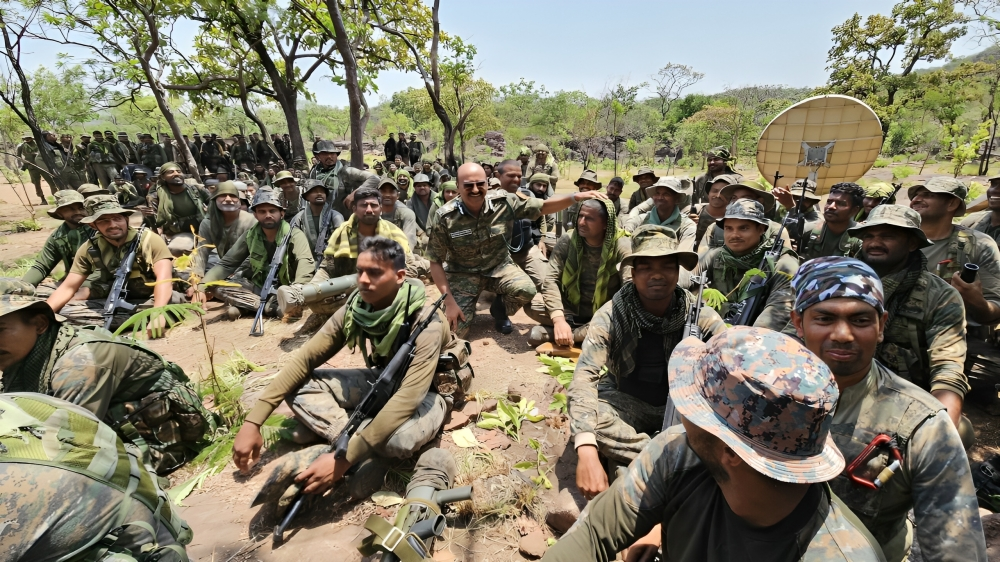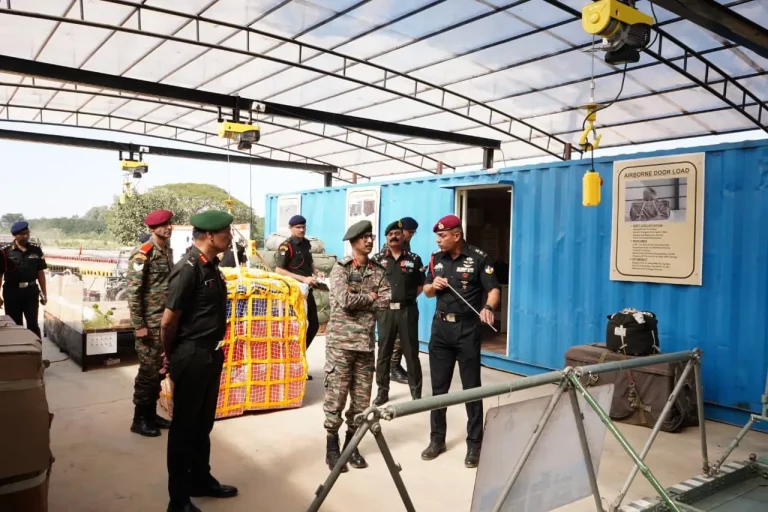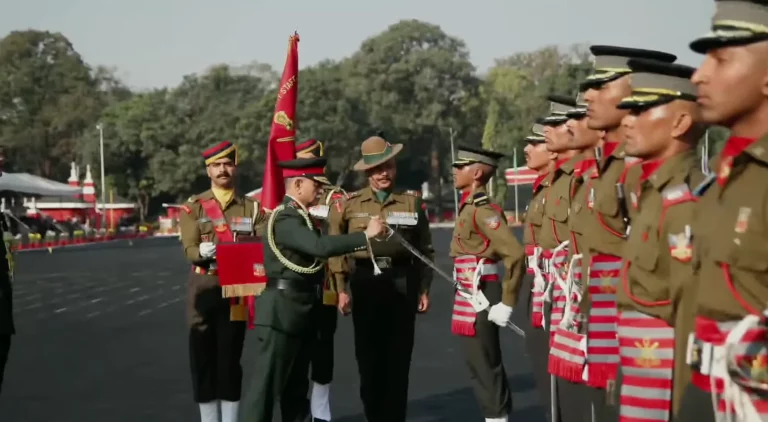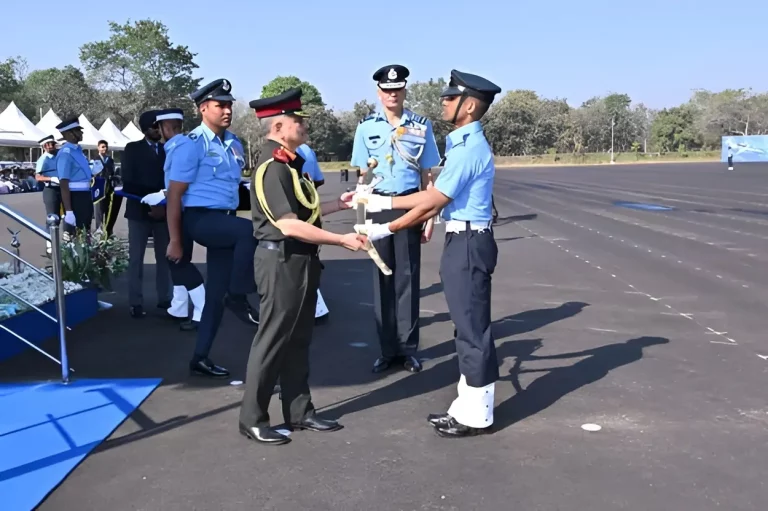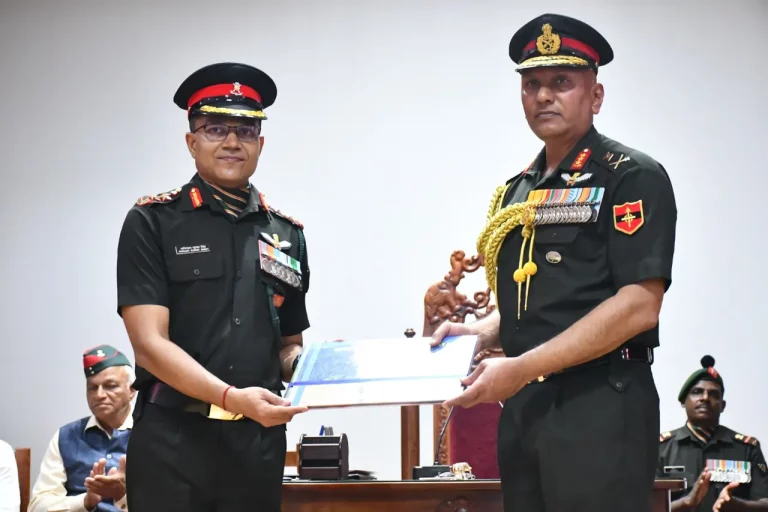In a significant development in India’s efforts against Left-Wing Extremism, the Director General of the Central Reserve Police Force (CRPF), Shri G.P. Singh, has been actively involved in Operation BlackForest, which is currently underway in the challenging terrain of the Korregutta Hills. This operation, targeting entrenched Maoist strongholds along the Chhattisgarh-Telangana border, represents a decisive and coordinated push to mitigate Naxalite influence in one of the country’s critical insurgency-affected regions.
Images from the operation reveal DG Singh at the forefront, surrounded by CRPF personnel donned in combat gear as he conducts strategic briefings amid dense forest cover. This emphasis on direct leadership exemplifies the CRPF’s operational philosophy, prioritizing engagement on the ground rather than remote oversight, thus enhancing the morale among the troops.
Since its launch in early May, Operation BlackForest has made substantial headway. The CRPF has introduced tactical innovations, including cave interventions aimed at dismantling extensive Maoist infrastructure concealed within the complex terrain of the Karregutalu Hills. Intelligence assessments have indicated that more than 250 caves were utilized by Maoists for various purposes, including as hideouts, weapons manufacturing sites, and storage facilities for explosives and food supplies. Notably, during the operation, CRPF units recovered a significant cache of munitions, including 818 barrel grenade launcher shells and 450 improvised explosive devices, highlighting the severity of the threat posed by Maoist factions in the region.
The presence of senior leadership in such perilous settings sends a robust message of determination. DG Singh’s involvement is strategic, aligning with Union Home Minister Amit Shah’s objective to eliminate Naxalism by March 31, 2026. This ambition, announced during the CRPF’s 86th Raising Day, underscored Shah’s recognition of the force’s ongoing efforts to dismantle major Maoist networks while promising continued government support.
Bijapur, a district historically affected by Left-Wing Extremism, is a principal focus of this renewed offensive. DG Singh has previously led strategic reviews in the area, emphasizing synchronized operations with the Chhattisgarh Police and the need for enhanced intelligence capabilities alongside tactical doctrines tailored to forest warfare. This collaborative approach underlines the evolving strategy of the CRPF in combating insurgency.
Historically, the CRPF has been integral in the fight against insurgency within the Red Corridor. From neutralizing notable Maoist leaders to executing operations in regions like Saranda and Maad, the force has continually sought to diminish extremist influence. Recently, there has been a strategic shift towards establishing Forward Operating Bases (FOBs) in densely forested areas, which help facilitate long-duration operations, improve response times, and extend the reach of governmental authority.
Operation BlackForest embodies this new doctrine. By venturing deep into previously inaccessible Maoist territories, the CRPF is not only dismantling crucial logistical networks but also reclaiming psychological territory. The operation’s accomplishments thus far serve to boost troop morale and send a clear message to Maoist factions that their erstwhile sanctuaries are increasingly under threat.
As the deadline for the 2026 objective approaches, DG Singh’s hands-on involvement in the operations underscores the commitment of CRPF leadership to realize a Naxal-free India. The momentum generated by Operation BlackForest holds the potential for a transformative shift in the security landscape in the heart of areas affected by Left-Wing Extremism. With continued strategic clarity and operational rigor, the CRPF is well-positioned to achieve its mission of fostering peace, development, and democratic governance throughout the region.
